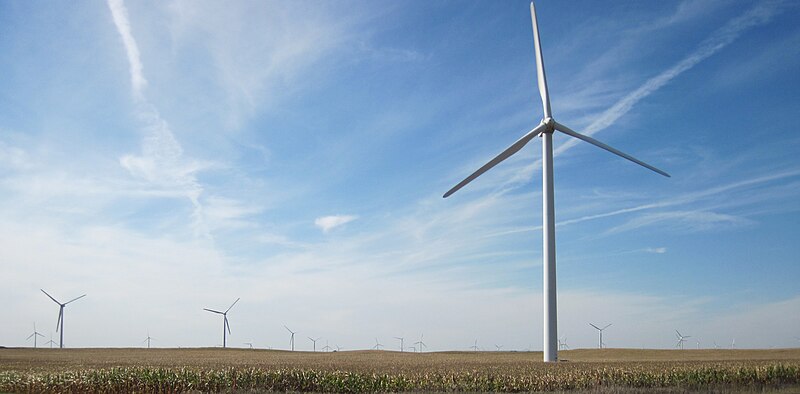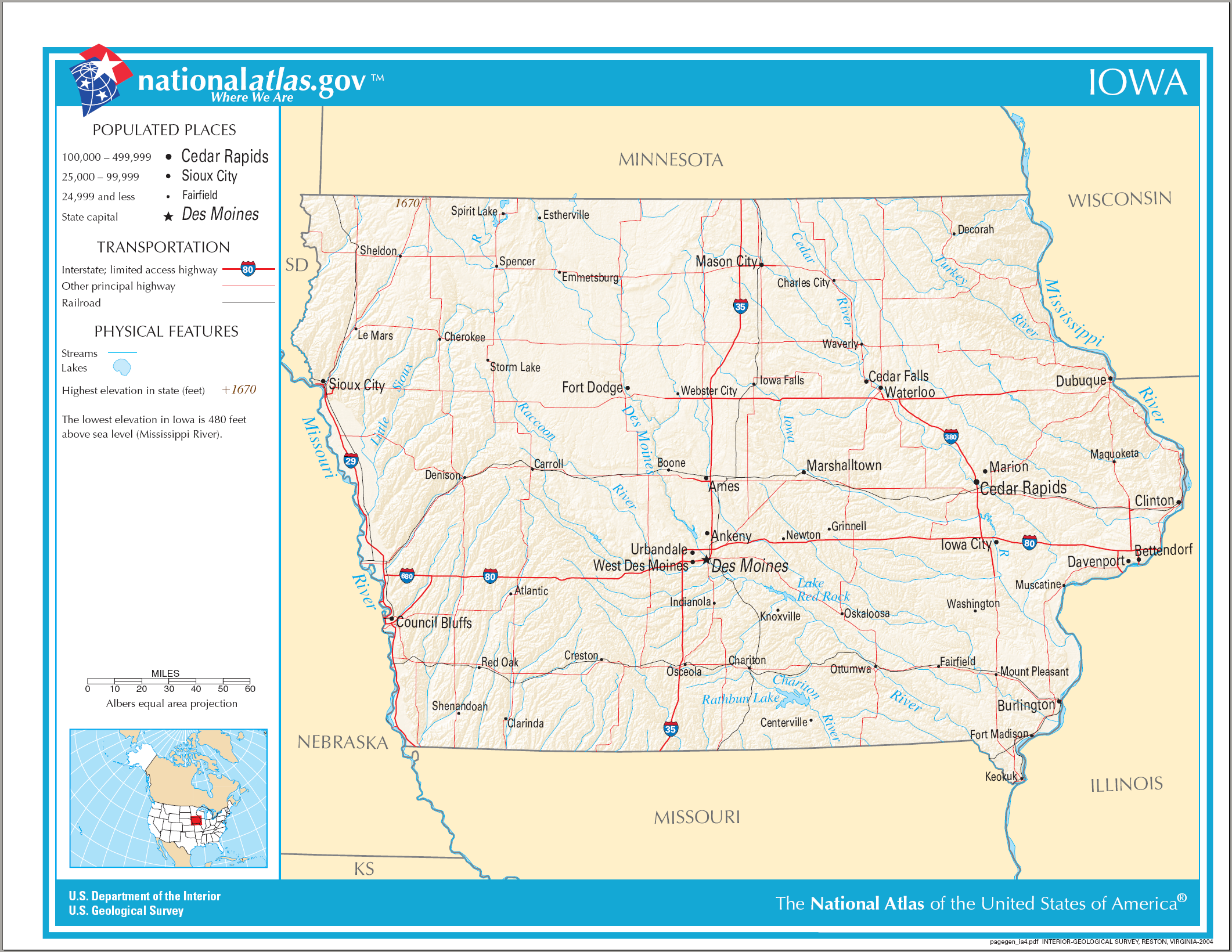The population of Iowa in 2012 was 3,074,186 which makes it the 30th largest state by population in the United States. Iowa is the 26th largest state in the United States by area. The highest point in Iowa is Hawkeye Point, at 1,671 feet. The Mississippi river runs along Iowa in the East forming the border with Illinois and Wisconsin. The state bird of Iowa is the Eastern Goldfinch.
Iowa is the site of a crater from a meteorite, called the Manson crater, though, it is no longer noticeable on the surface in modern times. It is possible the meteor that created the crater was over a mile in diameter. The Manson crater is in near the northwest of Iowa.
Though the state has been altered by agriculture which is the dominant landscape, Iowa's natural setting is mainly tallgrass prairie and savanna and to a lesser extent forests especially near rivers. In Iowa, the prairie remains intact in less than 1% of the area it once did.

Overlooking the Mississippi River at Pikes Peak State Park in Iowa. Photo Credit: McGhiever.

Wind turbines near Williams, Iowa. Photo Credit: Bill Whittaker.

Map of Iowa. Map credit: National Atlas of the United States, 2004.
